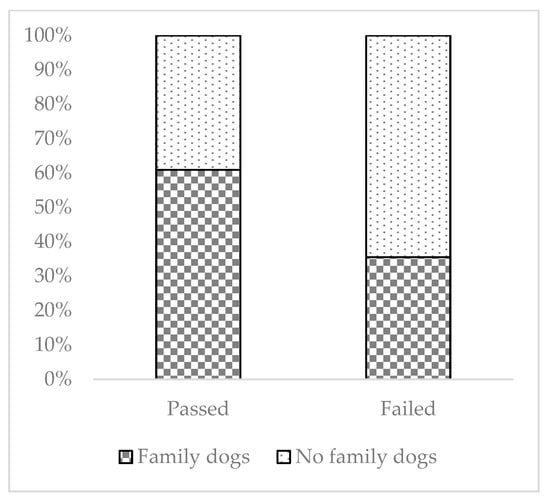- Article
Exploring Factors of Dog Temperament Impacting Pass/Fail Outcomes in Therapy Dog Aptitude Tests
- Shiori Kawai,
- Saki Terashima and
- Natsuki Ebashi
- + 4 authors
In recent years, requests for animal-assisted interventions (AAI) from medical institutions and welfare facilities have increased. Dogs are the most commonly used animals in AAI. Dogs that pass the “therapy dog” aptitude test can work in AAI. In previous research, we identified the Canine Behavior Assessment and Research Questionnaire (C-BARQ) factors common among dogs that passed the aptitude test. Using these factors, we developed the TC-BARQ, a screening questionnaire for therapy dogs that included 51 C-BARQ surveys. In this study, we conducted TC-BARQ screenings and compared the characteristics of dogs that passed and failed the aptitude test. We collected TC-BARQ data points from aptitude test examinees of the local AAI Dog Association. Each dog is identified by its breed, sex, neutering status, and whether it lives with another dog at home. For each question, we identified factors that differed between dogs that passed and those that failed. As a result, differences emerged in the presence of family dogs, particularly in behaviors related to aggression toward strangers and other dogs, as well as excitability toward people and situations. Continued surveillance is essential, but this study provides important information on selecting “therapy dogs”.
6 December 2025


